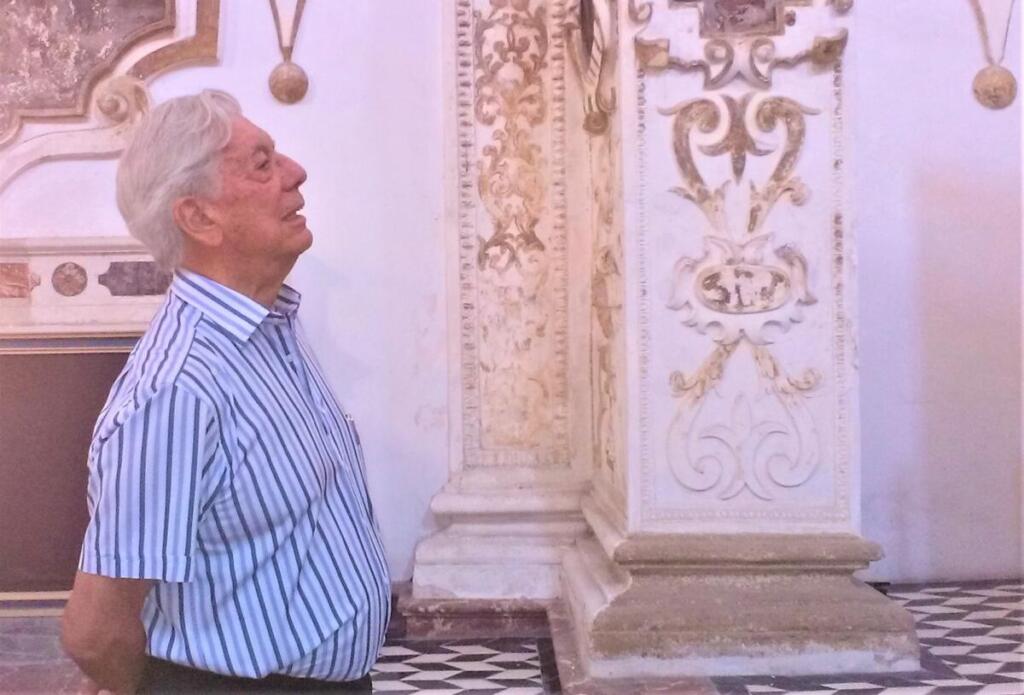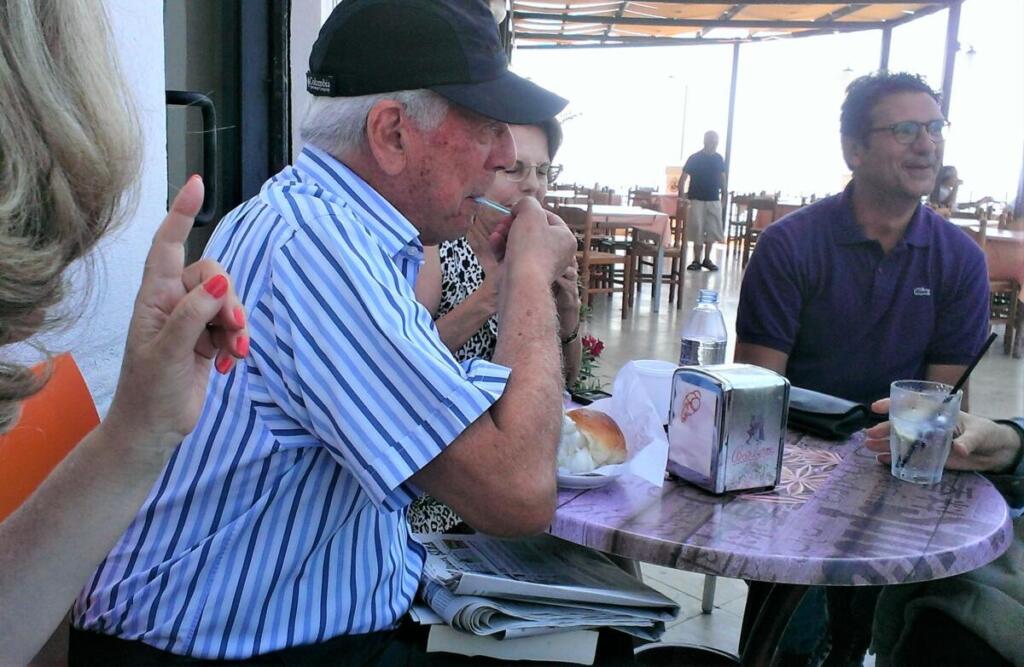Jorge Mario Pedro Vargas Llosa is a Nobel prize winner for literature and, during his short stay in Sicily, he expressed the desire to visit Sciacca with some friends.
Being pleased to spend a day with a Nobel prize winner, I organized a historical, cultural and artistic tour. The following day we left the hotel early in the morning.
Once in Sciacca I asked our driver to stop in Piazza Carmine. First stop was the church of Santa Margherita.
We entered and immediately Vargas Llosa was kidnapped by the royalty of the baroque decoration, then he looked up and after exploring the magnificent coffered roof he said to me: "magnificent and regal, thank you".
We left the church and hurried to show him the side door that can be admired from via Incisa. The master admired the door for a long time for its elegant grandeur and stylistic discordance, praising the great harmony created by maestro Gagini.
Some historical and architectural sites were closed, and we were forced to admire them only from the outside without losing the magic of Sciacca. At the beginning of Corso Vittorio Emanuele, Llosa and the other guests admired Palazzo Steripinto, Palazzo Scaglione and the monumental complex of Fazello.
We slowly walked down Via Giuseppe Licata and Corso Vittorio Emanuele through churches and palaces, browsing in the alleys to discover hidden treasures.
From time to time I looked at Maestro Llosa and the others trying to understand their moods and in all of them I could perceive gaiety and satisfaction for that cultural-artistic walk in Sciacca.
Slowly we went down via Garibaldi and headed to piazza Angelo Scandaliato, or rather, to "lu Chianu di San Numinicu" (the plain of San Numinicu). With quick steps the master Llosa went to the railing, looked out and immediately with a joyful expression called to all of us: "come, come here you can enjoy a divine show".
I went to the railing and looked at the sea, it shone in the rays of the sun like an immense and precious aquamarine.
We were tired and hot and we decided to sit in a bar to have a drink. It was a must to have them enjoy a lemon granita on the terrace of the ancient Caffè Scandaglia.
When the master had his brioche with granita in his hands, he began to taste it with a spoon, but I immediately said to him: "master the brioche here it is eaten in bites not with a spoon".
He laughingly replied:
"Ah well; I will bite it, but you have to take a picture of me. "

I answered: "sure, with pleasure". As we enjoyed the granita and the view of the sea, the tolling of the bells of the mother church attracted everyone's attention.
I told them about the devotion of the saccensi (people of Sciacca) to SS. Maria del Soccorso and the master expressed the desire to go to pay homage to the Blessed Virgin and so we went to the Basilica to pay homage to the beddra Matri of lu Succursu (beautiful Mother of Soccorso).
We continued our walk in Sciacca during which the guests were more and more curious and festive.
When the sun was already very high and hot, tired, satisfied and very hot, we walked to the bus to return to the hotel.
It was then that the Nobel Prize winner Mario Vargas Llosa placed an arm paternally on my shoulders and said:
"Thank you dear Betty for this day, thank you for allowing us to visit this beautiful city, thank you for showing us one of the pearls of the Mediterranean".
At that moment I felt inside me the pride of being a daughter of my land, of loving my town, often neglected and forgotten by the powers that be.
W. von Goethe, Edoardo Sanguineti, Pietro Germi and Mario Vargas Llosa are among the illustrious men who visited Sciacca. Everyone, when departing, left a piece of their heart.
In Sciacca the palaces, churches, squares, stairways, alleys and courtyards create an architectural-historical-cultural path that has silently written the history of Sicily over the centuries.
I will not be the one to praise my Sciacca, it will be the visitor who will love it as we do not know how to love it.








Follow us